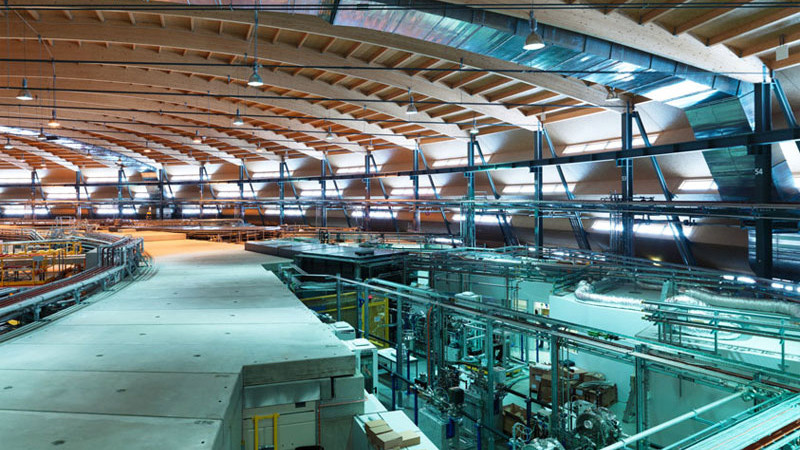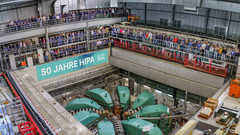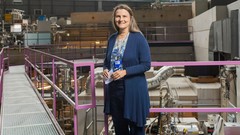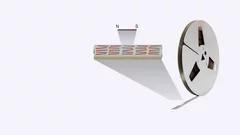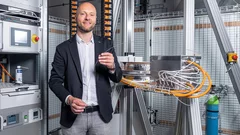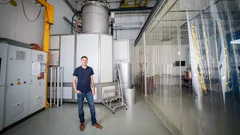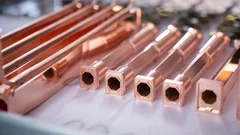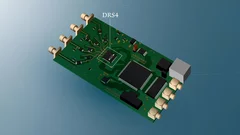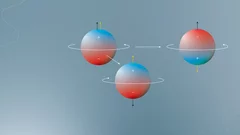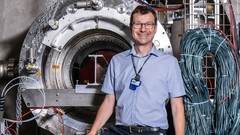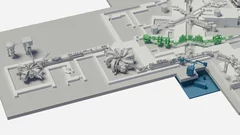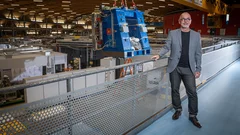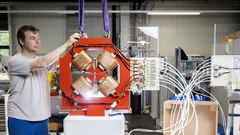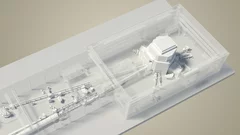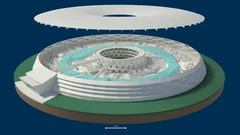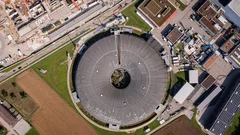Large Research Facilities
Sometimes, one needs unusually large pieces of equipment to look at the smallest of objects – because only these large machines or facilities can generate the probes
that are needed to examine matter in such a way that the information being sought can be obtained. PSI maintains a number of such facilities, making them available as a service for other institutions, but also using them for its own research. These facilities are unique within Switzerland, and PSI is the only location in the world for some of the facilities
Read more at: Large Research Facilities
Further information
Protons and other particles: The HIPA facility turns 50
Since 1974 HIPA has been accelerating protons for research.
„IMPACT is very important in terms of international competition“
Daniela Kiselev talks about the upgrade planned at PSI's proton accelerator facility.
Smart glass and music from SLS
Every year the PSI Founder Fellowship Programme supports new ideas for innovative applications with up to 150,000 Swiss francs.
Bringing SwissFEL light to industrial users
High throughput experiments will enable new structural biology users to benefit from XFEL light.
SLS 2.0: “Dark time” during the upgrade
The SLS is shutting down temporarily as it undergoes a major upgrade.
A metal alloy like a sponge
Once the vacuum chambers for the SLS 2.0 upgrade are the right shape, they still need a special surface coating.
A six-metre high oven
The most complicated vacuum chambers for the SLS 2.0 upgrade are being built in the PSI workshop.
500 vacuum chambers for the new ring
Making the tube through which the electrons will race after the SLS 2.0 upgrade.
What can’t be bought, we develop ourselves
Many components for the experiments the researchers at PSI just develop themselves.
More light in the darkness
At PSI, researchers want to fill the missing gaps in the Standard Model of particle physics with the help of the large research facilities.
“A jewel we must treasure”
HIMB is one of the two parts of the upgrade project IMPACT. Klaus Kirch speaks about the plans.
A two-part upgrade for the proton accelerator
A two-part upgrade is planned for HIPA starting in 2025. Preparations are already under way.
A piece of PSI history sets off on a long journey
Off to new shores – a high-tech component is on its way from PSI to Australia by sea. In future, it will be deployed at the Australian Synchrotron in Melbourne.
Faster and smarter
PSI is pooling its expertise regarding the evaluation of research data in the new research division Scientific Computing, Theory and Data.
SLS 2.0: The upgrade of the large research facility is progressing
The first special magnets required for the upgrade have arrived. In addition, the Canton of Aargau has released 9.75 million Swiss francs for the TOMCAT beamline.
A lively enterprise zone close by
Park Innovaare located next to PSI is growing, further pursuing its mission to help cutting-edge Swiss research transition to concrete applications and profitable companies.
Unique and unusual
An interview with Mike Seidel, Head of the Large Research Facilities Division.
3D view: the Swiss Spallation Neutron Source SINQ
What are neutron guides and what is liquid deuterium used for at SINQ? Our 3D graphic of the Swiss neutron spallation source SINQ provides insights.
3D view: Swiss Light Source SLS
Linear accelerator, booster ring, storage ring: our 3D graphic of the Swiss Light Source shows the inside of the facility and how it serves research.
SLS: The new crane comes from above
The Swiss Light Source SLS is getting a second hall crane. But how can the 42-metre-long, 40-tonne monster get into the building? The only way is from above.
